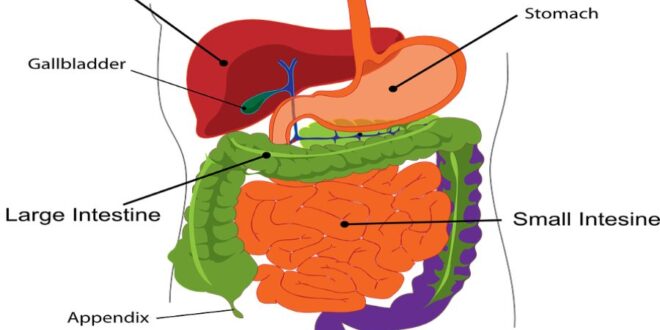How far can the human anus stretch? What are some of the most exciting things about this little-known part of the human body?
There have been numerous studies in the area, and more medical research has allowed people to discuss issues with the anus more extensively.
The particular topic of the anus’s capability to stretch has been fetishized by most, while others think about it in a purely informational sense.
Regardless of what your reasons are, this article will give you a lot of important information, so let us get into it;
How Far Can The Human Anus Stretch?
The human anus can stretch about 7 inches before it takes any permanent damage. The anus is designed to be elastic to allow for the passage of feces under various conditions.
Strong sphincter muscles keep the anus closed, so this would be a painful thing to happen. Stretching too much can damage these muscles and cause more medical complications that need surgery and therapy to reverse.
What Are Some Damaging Effects of Stretching The Anus Too Far?
Just because you can do something doesn’t mean you should, which also applies to the anus. Stretching the anus beyond its natural limits is bad and can have serious long-term repercussions. Here are some of the biggest things to worry about;
- Anal fissures. Extending the anus too far can result in tiny tears in the anus lining, known as anal fissures. These cracks can be uncomfortable and can result in intestinal leakage.
- Excessive stretching can also lead to the development or aggravation of hemorrhoids. Hemorrhoids are enlarged blood vessels in the lower abdomen that cause pain, itching, and bleeding.
- Incontinence. Excessive stretching of the muscles and tissues surrounding the anus might weaken the sphincter muscles, which govern bowel motions. This can lead to fecal incontinence, making it challenging to control stool release.
- Prolapse. Severe and frequent stretching can result in anal prolapse, in which the rectum’s inner lining protrudes through the anus. This condition necessitates medical attention and may require surgery to correct.
- Infections. Prolonged stretching of the anus can result in micro tears or damage to the protective lining, increasing the risk of infection. Bacterial or fungal infections might occur, causing pain, inflammation, and other difficulties.
What Can You Do To Reverse an Overstretched Anus?
Subjecting a body to extreme activities that might cause permanent damage is a bad idea. But if you have already crossed that line, there are some ways to correct the damage and lead a normal life. Here are some of the safest choices for repairing an overstretched anus;
1. Conservative measures. Conservative measures may be ideal in less severe instances. Dietary adjustments can be included, such as increasing fiber intake to encourage regular bowel movements and reduce constipation.
Maintaining good cleanliness and avoiding bowel straining might also be beneficial in retaining the anus’s original state.
2. Medications. Your doctor may prescribe medications to help you feel better and heal faster. Topical creams or ointments may ease discomfort, reduce inflammation, or treat specific ailments such as anal fissures or hemorrhoids.
3. Physical therapy. Pelvic floor physical therapy may be suggested in some circumstances. Exercises to strengthen the pelvic floor muscles, especially those around the anus, can be provided by a qualified physical therapist.
These exercises can assist in enhancing muscle tone and provide anal support.
4. Surgical interventions. Surgical intervention may be required in more severe situations or when conservative therapies are inadequate.
To restore the normal function and structure of the anus, procedures such as anal sphincteroplasty or rectal prolapse repair may be undertaken.
Fundamental Facts about The Human Anus
The human body is full of interesting organs with complex functionalities, and the anus is one such organ.
There is a lot of information about this little spoken-of organ that most people don’t know. Here are some wholesome anus facts that you might not know about;
- Structure. The anus is a muscular aperture produced by two sphincter muscles called the internal and external anal sphincters. The internal sphincter is involuntary and usually remains contracted, but the external sphincter is controlled voluntarily.
- Anal canal. The anal canal connects the anus to the rectum. The anal canal is a small channel from the rectum to the anus’s external orifice. It is lined by mucous membranes that are extremely sensitive.
- Sensory nerves. Because the anal region is densely packed with sensory nerves, it is very sensitive to touch, pressure, and temperature. This sensitivity allows us to distinguish between solid, liquid, and gas sensations, which aids in bowel movement regulation.
- Functions. The anus’ primary purpose is to eliminate feces, which are waste products of the digestive process. The sphincter muscles aid in regulating stool release, allowing for voluntary control of bowel movements.
- Blood supply. The anus gets its blood from various places, including the inferior rectal arteries and veins. These blood veins are critical to the health and normal functioning of the anal area.
- Common conditions. Anal fissures (tears in the anal lining), hemorrhoids (swollen blood vessels), anal abscesses (localized infections), and anal fistulas (abnormal tunnels between the anus and adjacent skin) are among the conditions that can affect the anus.
These conditions can cause pain, itchiness, or bleeding, especially with improper hygiene.
What Are Some Signs That An Anus Is Overstretched?
You might have done something adventurous one night, and you are wondering if your anus is overstretched and you need medical attention. There are some typical signs you can look out for as indicators of a bigger problem. Here are the main ones;
- Pain or discomfort. Anus overstretching can result in pain or discomfort in the anal region. This might happen during bowel movements, sitting, or even during rest.
- Bleeding. Excessive stretching can cause rips in the anal lining, resulting in bleeding. Blood may be seen on toilet paper, in the toilet bowl, or on the stool’s surface.
- Itching or irritation. Excessive stretching of the anus can create irritation and itching in the anal area. This could be due to the delicate skin’s disturbance and greater nerve-ending exposure.
- Fecal incontinence. If the stretching has weakened the sphincter muscles, it may be difficult to control bowel motions. The involuntary flow of stool is referred to as fecal incontinence.
- Prolapse. Severe stretching can contribute to the development of anal prolapse, in which the rectum’s inner lining protrudes through the anus. This might be seen as a bulge or lump around the anus.
- Changes in Bowel Habits. Excessive anus stretching may result in bowel habit changes such as increased urgency, difficulty passing stools, or a sense of incomplete evacuation.
Ways To Prevent The Anus From Overstretching
The best solution to most issues is preventing them and caring for your body. Having suitable preventive measures can save you money, time, and pain. So here are a few ways to keep your anus from overstretching;
- Eat a fiber-rich diet. Eat a fiber-rich diet to promote regular bowel movements and prevent constipation.
To obtain enough fiber, include fruits, vegetables, whole grains, and legumes in your diet. Avoid eating too many processed foods, which are typically poor in fiber.
- Stay hydrated. Drink enough water throughout the day to keep your stools soft and easy to pass. Hydration aids in the prevention of constipation by minimizing the need for straining during bowel movements.
- Maintain good bathroom habits. Avoid squeezing your bowel motions. Allow natural bowel movements to occur without using force on the toilet. Maintain a comfortable posture while sitting on the toilet and prevent excessive straining or prolonged sitting.
- Avoid delaying bowel movements. When the urge to urinate arises, act quickly. Ignoring the need may result in tougher stools and increased straining, contributing to anus stretching.
- Maintain good anal hygiene. Maintain a clean and dry anal region. After bowel motions, clean the area gently with mild, unscented soap and water, or use moist wipes designed exclusively for the anal region.
Avoid using irritant-causing soaps, perfumes, or rough toilet paper.
- Exercise regularly. Exercise regularly to support good digestion and maintain appropriate muscular tone, especially the muscles around the anus. Exercise can assist in reducing constipation and promoting healthy bowel motions.
- Avoid excessive anal stimulation. Avoid engaging in anal intercourse or using large objects that involve excessive anal stimulation or insertion. These activities have the potential to stretch the anus and cause difficulties.
- Seek medical advice. If you have prolonged anal discomfort, bleeding, or other concerns about your anal health, you must visit a healthcare practitioner.
They can provide tailored advice, conduct appropriate examinations, and address underlying concerns.
Conclusion
You better understand how far a human anus can stretch and the possible repercussions of pushing it past this point. The human body is incredible, and you need to understand its limits and how to take care of it to have a fruitful and healthy life.
There are numerous remedies to help the anus recover should it get overstretched, but the best solution in most cases is prevention. Eat a healthy diet, exercise appropriately, and maintain proper anal hygiene to prevent medical issues.
 Being Human
Being Human




